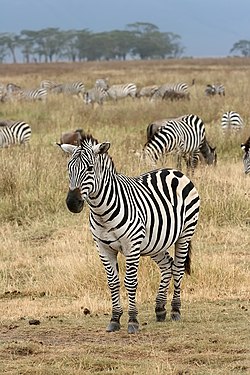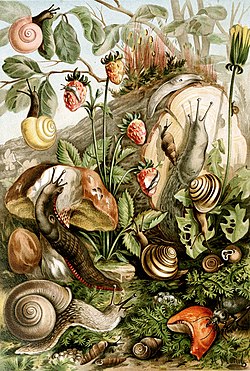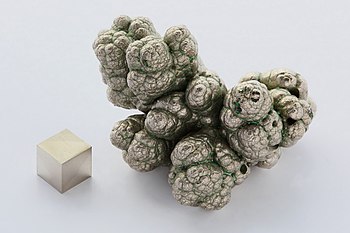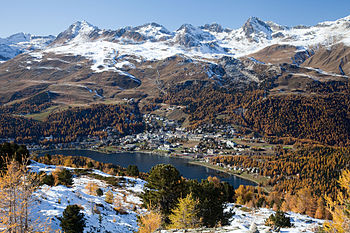|
Featured picture tools: |
These featured pictures, as scheduled below, appeared as the picture of the day (POTD) on the English Wikipedia's Main Page in July 2012. Individual sections for each day on this page can be linked to with the day number as the anchor name (e.g. [[Wikipedia:Picture of the day/July 2012#1]] for July 1).
You can add an automatically updating POTD template to your user page using {{Pic of the day}} (version with blurb) or {{POTD}} (version without blurb). For instructions on how to make custom POTD layouts, see Wikipedia:Picture of the day.Purge server cache
July 1

|
|
A drawing depicting the death of John F. Reynolds, a United States Army officer who was killed at the Battle of Gettysburg on July 1, 1863. Reynolds was commanding the "left wing" of the Army of the Potomac. As he was exhorting his troops, "Forward men! For God's sake forward!", he fell from his horse with a wound in the back of the upper neck, or lower head, and died almost instantly. His death essentially selected the location for the battle, to fight on that ground with forces that were initially numerically inferior to the Confederates that were concentrating there. Artist: Alfred Waud; Restoration: Jujutacular/PLW
Recently featured:
|
July 2

|
The F-16 Solo Display Team is one of three solo aerobatics display teams of the Royal Netherlands Air Force. It is currently based at Volkel Air Base in the Dutch province of North Brabant and consists of the pilot, two instructors and seven ground crew. Photo: Łukasz Golowanow
Recently featured:
|
July 3

|
The plains zebra (Equus quagga, subspecies Grant's zebra pictured) is the most common and geographically widespread species of zebra. It ranges from the south of Ethiopia through East Africa to as far south as Angola and eastern South Africa. The plains zebra is mid-sized, smaller on average than the other two zebra species, and thick-bodied with relatively short legs. Adults of both sexes can stand from 1.1 to 1.47 m (3.6 to 4.8 ft) high at the shoulder, are 2 to 2.5 m (6.6 to 8.2 ft) long (excluding the tail), and weigh 175 to 387 kg (386 to 853 lb), with males slightly heavier than females. Photo: Muhammad Mahdi Karim
Recently featured:
|
July 4

|
Maximum Intensity Projection (MIP) of a wholebody positron emission tomography (PET) acquisition of a 79 kg (174 lb) female after intravenous injection of radiopharmaceuticals, an example of nuclear medicine, a medical specialty involving the application of radioactive substances in the diagnosis and treatment of disease. This technique allows physicians to image the extent of a disease process in the body, based on the cellular function and physiology, rather than relying on physical changes in the tissue anatomy. This particular scan was performed as part of a tumor diagnosis prior to applying radiotherapy. Besides normal accumulation of the tracer in the heart, bladder, kidneys and brain, liver metastases of a colorectal tumor are clearly visible within the yellow and red area in the right upper abdomen. Image: Jens Langner
Recently featured:
|
July 5
|
Incahuasi Island is in the middle of the Salar de Uyuni salt flat in the Potosí Department in Bolivia. The island covers 24.62 hectares (60.8 acres) and consists of rocky, hilly terrain, with unusual and fragile coral-like structures and deposits that often consist of fossils and algae. It is the remains of the top of an ancient volcano which was submerged when the area was part of a giant prehistoric lake, roughly 40,000 years ago. Photo: Martin St-Amant
Recently featured:
|
July 6

|
An illustration of various Pulmonata (and one predator arthropod in the lower right), an informal group of snails and slugs characterized by the ability to breathe air, by virtue of having a pallial lung instead of a gill, or gills. Pulmonata was previously a formal taxon but lost its status as one in 2010. The group includes many land and freshwater families, and several marine families. Most species have a shell, but no operculum, although the group does also include several shell-less slugs. Pulmonates are hermaphroditic, and some groups possess love darts. Artist: H. Morin; Restoration: Citron
Recently featured:
|
July 7

|
The West Indian sea egg (Tripneustes ventricosus) is a species of sea urchin found in the Caribbean Sea and neighboring parts of the Atlantic Ocean. It is dark in colour, usually black, dark purple, or reddish brown, with white spines 1–2 cm (0.4–0.8 in) long, and can grow to 10–15 cm (3.9–5.9 in) in diameter. Photo: Nick Hobgood
Recently featured:
|
July 8

|
Hera is an Icelandic singer-songwriter who emigrated to New Zealand as a teenager. She is known for her facial art, which is "inspired by moko and also by Celtic warrior paint" and intended to represent both her Icelandic and New Zealand heritage. In 2002 she was named Best Female Singer at the Icelandic Music Awards. Photo: Kyle Cassidy
Recently featured:
|
July 9

|
Mission Santa Clara de Asís is a Spanish mission founded by the Franciscan order in the present-day city of Santa Clara, California. It is named for Saint Clare of Assisi, the foundress of the order of the Poor Clares. It is the namesake of both the city and county of Santa Clara, as well as Santa Clara University, which was built around the mission. Photo: JaGa
Recently featured:
|
July 10

|
Electrolytically refined pure (99.9%) nodules and a 1 cm3 cube of nickel, a silvery-white lustrous transition metal with a slight golden tinge. The nodules have visible green, crystallized nickel-electrolyte salts in the pores. Native nickel is rarely found on Earth's surface, being mostly confined to the interiors of larger nickel–iron meteorites. Photo: Alchemist-hp
Recently featured:
|
July 11

|
The Pink Robin (Petroica rodinogaster) is a small passerine bird native to temperate forests and subtropical or tropical moist lowland forests of southeastern Australia. Measuring 13.5 cm (5.5 in) in length, the robin has a small thin black bill, and dark brown eyes and legs. The male (seen here) has a distinctive white crown and pink breast, grey-black upperparts, wings and tail. Photo: JJ Harrison
Recently featured:
|
July 12

|
|
A view west along the main stem of the Chicago River, a system of rivers and canals that runs through Chicago, Illinois, US. Though not especially long, the river is notable for being the reason why Chicago became an important location, as the link between the Great Lakes and the Mississippi Valley waterways. Buildings such as Trump International Hotel and Tower in the center and Aqua (gray building with turquoise "streak") are among the prominent structures depicted. On the right is the cleared land that was awaiting redevelopment as the Chicago Spire. This photo is from the Link Bridge with the Streeterville region of the Near North Side community area to the north and the Lakeshore East and Illinois Center regions of the Loop to the south. Photo: Mindfrieze
Recently featured:
|
July 13

|
An ant encased in amber, the name for fossilized tree resin. Amber has been known since at least the fourth century BC and was used as fuel in ancient times, as well as jewelry, a use which continues to this day. The Roman naturalist Pliny the Elder correctly theorized that because insects and other objects were occasionally found in amber, it must have been a liquid at some point in the past. The English word amber derives from the Arabic anbar, via Medieval Latin ambar and Old French ambre. The word originally referred to a precious oil derived from the sperm whale (now called ambergris). The two substances were confused, because they both were found washed up on beaches. Photo: Anders L. Damgaard
Recently featured:
|
July 14

|
A hand-tinted glass slide of cold weapons and armor typically used by samurai, members of the military nobility of pre-industrial Japan. On the left can be seen pole weapons, with a variety of swords in the middle, and longbows on the right. Flanking the weapons are two suits of armor, with a man using a soroban on the far left. Photo: T. Enami
Recently featured:
|
July 15

|
A view from space of an explosive eruption of Sarychev Peak on June 12, 2009. The volcano is the central peak of Matua, an uninhabited island in the Kuril archipelago in the Sea of Okhotsk east of Russia and north of Japan. During World War II, the Imperial Japanese Army had an airfield on the island, which was taken over by the Soviet Border Troops after the war and abandoned in 1999. Photo: NASA
Recently featured:
|
July 16

|
A photomontage of several views of the shell of a ramose murex (Chicoreus ramosus), a species of predatory sea snail found in shallow waters of the Indo-West Pacific. The shell is large, up to 330 mm (13 in) in length and coloured white to light brown externally and generally pink towards the inner edge, the outer lip and the columella. Photo: H. Zell
Recently featured:
|
July 17

|
Arrangement in Gray: Portrait of the Painter, a self-portrait painting by American-born British-based artist James Abbot McNeill Whistler (1834–1903). Whistler, best known for the painting Whistler's Mother, was the founder of the tonalist movement in art, a leader in the Aesthetic Movement and a proponent of "art for art's sake". Born in Lowell, Massachusetts, he lived in Russia, England, and the US in his youth, studied art in France, and finally moved permanently to London in 1859. He was highly influential and during his life, he affected two generations of artists, in Europe and in the US.
Recently featured:
|
July 18

|
The Beautiful Demoiselle (Calopteryx virgo) is a European damselfly. It is often found among fast-flowing waters. Males (shown here) have metallic blue wings and metallic blue-green bodies. Females have dark brown iridescent wings, a white pseudopterostigma near the tip of the wings and a metallic green body with a bronze tip of the abdomen. Photo: Richard Bartz
Recently featured:
|
July 19

|
The slate pencil urchin (Eucidaris tribuloides) is a species of sea urchin that inhabits littoral regions of the Atlantic Ocean. It is a nocturnal bottom-dweller: during daylight hours, the slate pencil urchin uses its large primary spines to anchor itself under or atop rocks or to lodge itself in crevices. Photo: Nick Hobgood
Recently featured:
|
July 20

|
The red-necked wallaby (Macropus rufogriseus ssp. rufogriseus shown here) is a medium-sized marsupial macropod, common in the more temperate and fertile parts of eastern Australia, including Tasmania. They can weigh 13.8 to 18.6 kg (30 to 41 lb) and attain a head–body length of 90 cm (35 in), with males being generally bigger than females. They are mainly solitary but will gather together when there is an abundance of resources such as food, water or shelter. Photo: JJ Harrison
Recently featured:
|
July 21

|
Johnny Evers (1883–1947) was an American baseball player and manager. He spent the majority of his playing career with the Chicago Cubs (as pictured here), winning the 1907 and 1908 World Series with them. He was traded to the Boston Braves in 1914 and helped them to win the 1914 World Series. Evers' name was immortalized in the poem Baseball's Sad Lexicon as the middle component of the "Tinker to Evers to Chance" double play combination. After retiring as a player in 1917 he managed the Cubs, the Chicago White Sox, and the minor league Albany Senators. In 1946 he was inducted into the Baseball Hall of Fame. Photo: Bain News Service; Restoration: Staxringold
Recently featured:
|
July 22

|
|
A 3D ray tracing of a glass molecular model, demonstrating the algorithm's ability in simulating depth of field (DOF), which is the distance between the nearest and farthest objects in a scene that appear acceptably sharp in an image. When much of the foreground and background of an image is sharp, its DOF is deep. The opposite is called shallow focus. Image: Purpy Pupple
Recently featured:
|
July 23

|
|
The obverse (left) and reverse sides of a Fields Medal, the colloquial name for a prize awarded to two, three, or four mathematicians not over 40 years of age at each International Congress of Mathematicians. The name is in honour of Canadian mathematician John Charles Fields, who was instrumental in establishing the award. It is often viewed as the greatest honour a mathematician can receive. Photo: Stefan Zachow, International Mathematical Union
Recently featured:
|
July 24

|
The Bassian Thrush (Zoothera lunulata) is a medium-sized mostly insectivorous thrush found predominantly in shrubland, forests, and rainforests of southeastern Australia including Tasmania. It grows to about 28 cm (11 in) in length and about 100 g (3.5 oz) in weight. Photo: JJ Harrison
Recently featured:
|
July 25

|
On July 25, 1976, the Viking 1 spacecraft captured images of a mesa in the Cydonia region of Mars with the appearance of a humanoid face (see inset), which led to much speculation about life on Mars. In 2007, high-resolution images taken by the Mars Reconnaissance Orbiter of the same structure definitively showed that the face was merely an optical illusion known as pareidolia. Photo: NASA/JPL/University of Arizona
Recently featured:
|
July 26

|
The Bay of Kotor is a winding bay on the Adriatic Sea in south-western Montenegro. It is a ria of the disintegrated Bokelj River which used to run from the high mountain plateaus of Mount Orjen. The bay has been inhabited since antiquity and has some well preserved medieval towns, making it an important tourist attraction in Montenegro. Photo: Ggia
Recently featured:
|
July 27

|
Rhodium, one of the rarest metals on Earth, in three states of processing: one gram in powder form, a one-gram pressed cylinder, and a one-gram argon arc remelted pellet. Rhodium is a chemically inert precious transition metal found as a free metal or in platinum or nickel ores together with the other members of the platinum group metals. Photo: Alchemist-hp
Recently featured:
|
July 28

|
View of St. Moritz in Switzerland and its lake, as seen from the hiking trail to Celerina/Schlarigna. The town, which has existed since at least the 12th century, is named after Saint Maurice, the patron saint of soldiers. St. Moritz was the host of the 1928 and 1948 Winter Olympics, and has hosted championships for other winter sports as well as sailing and windsurfing competitions. Photo: Murdockcrc
Recently featured:
|
July 29

|
The European bison or wisent (Bison bonasus) is the heaviest of the surviving land animals in Europe, with males growing to around 1,000 kg (2,200 lb). European bison were hunted to extinction in the wild, but have since been reintroduced from captivity into several countries. This male is moulting, his winter coat coming off in clumps. Photo: Michael Gäbler
Recently featured:
|
July 30

|
The Christmas tree worm (Spirobranchus giganteus) is a small, tube-building marine polychaete worm. Both its common and Latin names refer to the two spiral structures, the most common feature seen by divers, which resemble Christmas trees. These are specialized mouth appendages which trap prey microorganisms and also act as respiratory structures. Photo: Nick Hobgood
Recently featured:
|
July 31

|
American writer and essayist G. D. Falksen wearing steampunk attire, reflecting the genre of fiction for which he is best known. His work includes several short stories and a novel released in July 2011. His large number of articles on the genre have led him to be called "America's authority on the movement" and "the unofficial face of Steampunk". Photo: Tyrus Flynn
Recently featured:
|
Picture of the day archives and future dates
